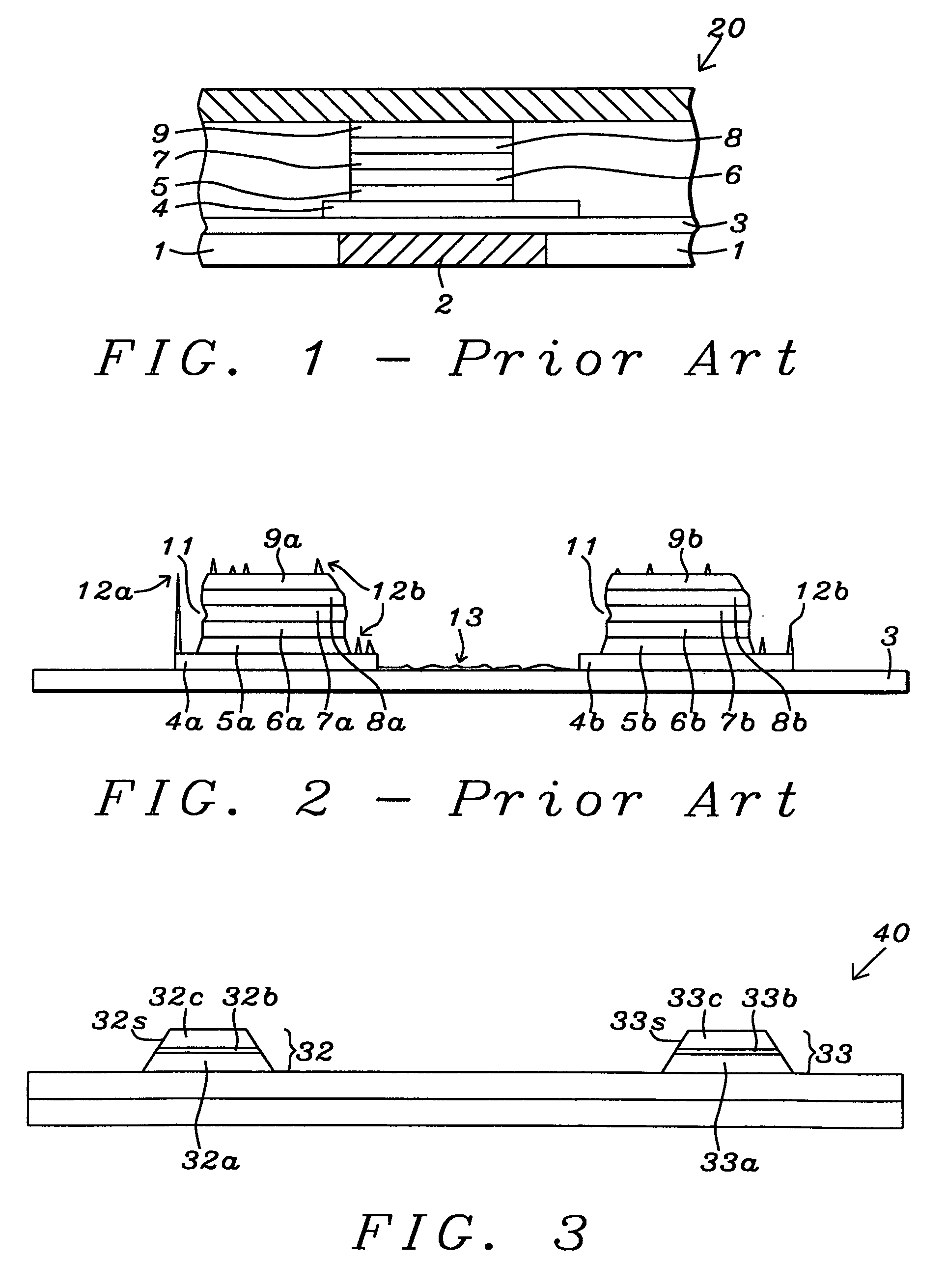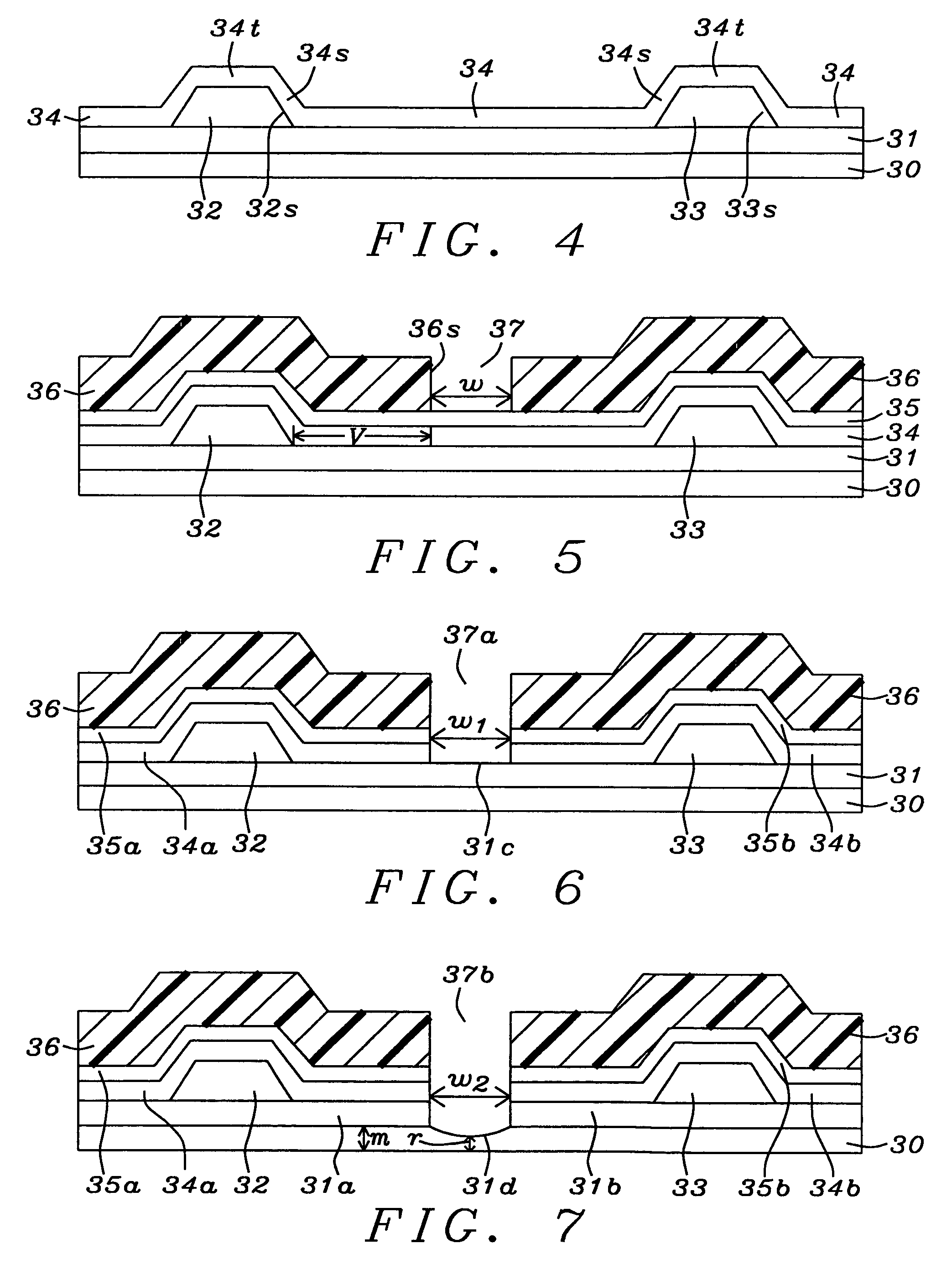Bottom electrode etching process in MRAM cell
a bottom electrode and mram cell technology, applied in the manufacture/treatment of electrical devices, semiconductor devices, electrical apparatus, etc., can solve the problems of limiting the further reduction of line width, affecting the production efficiency of ic devices, and unable to manufacture a very high density ic device as is required for spin torque mram applications
- Summary
- Abstract
- Description
- Claims
- Application Information
AI Technical Summary
Benefits of technology
Problems solved by technology
Method used
Image
Examples
Embodiment Construction
[0029]The present invention is a process sequence for patterning a bottom electrode layer in a MRAM cell that avoids the formation of BE-BE shorts, BE-bit line shorts, and damage to the MTJ element within the MRAM cell. The present invention encompasses various MTJ configurations such as bottom spin valve, top spin valve, and multi-layer spin valve structures. We have found that the BE process sequence is as critical as the selection of materials for various MRAM layers in optimizing device performance.
[0030]Referring to FIG. 3, a cross-sectional view of a partially completed MRAM structure 40 is shown that includes two MTJ elements 32, 33 formed on a bottom electrode layer 31, typically with a thickness from 100 to 600 Angstroms. BE layer 31 is disposed on an ILD layer 30 having a thickness in the range of 200 to 800 Angstroms. It should be understood that the MRAM structure 40 comprises a plurality of MTJ elements but only two MTJ elements are depicted in order to simplify the dra...
PUM
 Login to View More
Login to View More Abstract
Description
Claims
Application Information
 Login to View More
Login to View More - R&D
- Intellectual Property
- Life Sciences
- Materials
- Tech Scout
- Unparalleled Data Quality
- Higher Quality Content
- 60% Fewer Hallucinations
Browse by: Latest US Patents, China's latest patents, Technical Efficacy Thesaurus, Application Domain, Technology Topic, Popular Technical Reports.
© 2025 PatSnap. All rights reserved.Legal|Privacy policy|Modern Slavery Act Transparency Statement|Sitemap|About US| Contact US: help@patsnap.com



